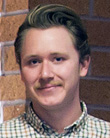full article:
Background
In a recent, thought-provoking editorial Wakerman and colleagues presented a balanced exploration of Fly in/Fly Out (FIFO) health care, posing the question of whether it is a 'problem or panacea'1. This publication provoked our interest during studies in a rural and remote area nursing elective, Bachelor of Nursing degree program (final semester, prior to degree completion).
Fly- in/ Fly-out models of health care attracted our attention as emerging forms of equitable healthcare provision and pathways for us in rural-remote nursing. However, on reviewing the contemporary literature we discovered unexpected complexities, and as a small group of interested and invested graduating nursing students, we have explored some of these healthcare tensions from our own perspectives. We have also endeavoured to bring some insights into the issues surrounding the recruitment of rural and remote nurses, and the possibilities of our engagement with new models of healthcare delivery as graduating nursing students transitioning to practice.
FIFO Nursing - central issues and developments
'Fly-in / Fly-out' is a work practice utilised by the mining sector for more than 25 years, although today it is becoming more common across varied professions, in particular nursing and allied health2. Fly-in/ Fly-out nursing is currently being engaged to service and meet regional and remote Australia's healthcare needs. A FIFO nursing model is also playing a role in servicing regional and remote areas of Australia where the attraction and retention of health professionals is a constant problem3,4. A further contributory factor to these concerns is that the nursing and midwifery workforce is an ageing population5, with the mean age of nurses and midwives in rural and remote areas highest6. Some rural and remote healthcare facilities predominantly rely on new graduates from regional universities for staff recruitment7. However nursing attrition rates in rural and remote areas are high, particularly among new graduates8.
Nurses in rural and remote practice tend to work longer hours, and even those employed part time often work close to full-time hours9. This creates problems for nurses in taking leave and coping with increased workloads, and leads to work-related stress10. Additionally, poor opportunities for both professional development and ongoing education are serious disincentives for nurses to move into or remain nursing in rural and remote areas11. Family dislocation and separation, and a lack of social networks have also been identified as common reasons for nurses leaving rural and remote practice12.
Nurses (particularly new graduates) are unlikely to be prepared for rural and remote practice because the majority of nurses are educated in metropolitan areas and their education is concentrated on career aspirations in these areas13. In addition, Kenny and Duckett identified a deficit in rural and remote nursing skills, but also contended that the knowledge and skills required for rural and remote practice are not necessarily specific to these contexts. Rather, they suggest, management skills, mental health care, advanced health assessment and advanced life support are areas of particular and required skilled practice. Significantly, new graduate nurses going into rural-remote nursing often have to take on a high level of responsibility, and may be the nurse in charge early in their new-graduate program. New graduates have a significantly higher attrition rate than other nurses14. In response to these factors it may be time to review the facilitation of postgraduate studies for those working in rural and remote healthcare, and instead concentrate on preparing nurses for rural and remote practice during their undergraduate degree. This could produce an increase in the number of new graduate nurses entering rural and remote practice with preparation and competence.
However, recent research on Australian young people suggests that future models of rural and remote service delivery will need to accommodate a generation of health workers increasingly concerned with career flexibility, mobility and work-life balance15. Clearly, there are wider social factors and forces in play than just professional education. In addition, adequate housing and housing affordability in regional and remote areas is now a major concern affecting both the provision of healthcare services and attracting and retaining a healthcare workforce4.
The FIFO modes of employment, particularly long-term shared positions, may have the potential to address these problems regarding the recruitment, retention and ongoing professional development of the rural and remote nursing workforce of tomorrow. Many rural and remote service providers already rely on and expend considerable funds for short-term locum and agency staff16. This may lead to decreased effectiveness of services due to high turnover rates and increased pressure on long-term staff who are required to orientate locum and/or agency staff17. If such funding were directed towards a systematic and well-planned model for the recruitment of long-term FIFO nurses who would serve the same communities for an extended period of time, it is possible that the need for short-term agency/locum staff could be extinguished, along with the associated problems. Furthermore, employment partnerships with large teaching hospitals in metropolitan areas would allow nurses to continue to develop areas of expertise within particular fields.
The factor that may be of most significance is the potential ability to accommodate family commitments for those who may not be willing or able to relocate to a rural or remote area. Margolis positively appraises this delicate balancing of 'separateness and togetherness' in his exploration of a FIFO remote medical workforce18. However, ways of promoting and supporting the dynamic commitments and connections that nurses have to significant others in their lives arguably deserves closer and ongoing attention within FIFO models of nursing.
Thoughts on FIFO nursing
As four nursing students, we individually wrote reflections on our perceptions of and aspirations regarding FIFO nursing. These reflections were thematically analysed by our nursing lecturer. Our discussion was informed by our studies together in a rural and remote nursing elective of 8 weeks duration. The following major themes emerged from our reflections.
Potential gains of FIFO nursing
Healthcare services that incorporate a FIFO nursing workforce have enormous potential if a well-researched, well-planned model is designed with input from rural-remote communities and the healthcare workforce. However, if we continue to view FIFO as a 'second best' option, we are failing to acknowledge that no model of health service delivery is perfect from the outset. Fly-in/ Fly-out health care may never be the 'panacea to the problem', but it may prove to be the most viable option in rural-remote areas of Australia, if implemented carefully and with ongoing evaluation and refinement.
We believe that one of the biggest issues for FIFO nurses, and their communities, would be mental health issues, and the need for continuity of care. If FIFO nursing services are to be provided to rural-remote areas, continuity of mental health care is essential for recovery-focused care. It is also important from our nursing perspective to uphold holistic models of social health, resisting the tendencies to implement FIFO nursing models that are limited by a biomedical focus of care.
We perceive the role of a FIFO nurse as being a lifestyle and life choice, not just a job. However, FIFO models are based on transience and there might be reluctance or ambivalence from rural residents and remote communities who view the FIFO nurse as a disengaged external expert who has few professional or social commitments to or connections with those they serve. This would present a challenge to nurses as they try to gain trust from the people and communities they would be caring for. This may also influence nurses' connectedness to rural-remote communities, and have a negative impact on their professional morale.
Barriers to FIFO nursing
FIFO nursing requires one to be able to cope away from family and friends. This may limit the type of new graduate nurse who will be willing or able to enter the FIFO workforce. The FIFO nurse would need to adjust to the experience of small town isolation, particularly when one is not only from the 'outside', but also a transient outsider.
Being unsettled and having to travel on a regular basis is a feature of this type of employment, and thus it may be suited best to the young or at least the young at heart. Limited access to leisure activities while on location may be another of the difficulties that FIFO nurses would encounter. Nurses would need to be mindful of the effect of stressors (eg limited social support and social dislocation), the health risks, unhealthy behaviours and family breakdown - the most adverse consequences of professional lives that are dislocated from personal lives.
What would attract us to be a FIFO nurse?
We would be attracted to FIFO nursing if a well-planned model of care was in place that had been devised with the input of the community itself, which worked to provide flexibility in care delivery to ensure that the needs of each particular community were met.
In the recruitment and retention of FIFO Nurses, remuneration must recognise the costs of travel, time away from home, long hours, and a healthcare role that is highly demanding, with significant work-related and interpersonal stressors. Another drawcard to FIFO nursing for us, due to the limits to income expenditure within a FIFO lifestyle, is the potential earning capacity for new graduates trying to reduce their university study debts and/or accrue savings. Such a position would also provide nurses with the opportunity to travel throughout Australia while continuing to live in their home city but work in rural-remote areas where their passion lies.
Postgraduate education that was flexibly responsive to FIFO work commitments would be very valuable, allowing for both distance education experiences, and on-campus studies when nurses were back at their metropolitan homes. Finally, another significant attraction of FIFO rural-remote nursing is the vast difference in experiences we could have while on location, which would bring strong and unique clinical nursing skills that might never be found in a metropolitan hospital setting.
Do new graduate nurses have enough experience to work as a FIFO nurse?
A new graduate nurse cannot be seen as the 'specialist generalist' of rural and remote nursing; this requires experience in multiple areas of nursing, particularly primary care, health promotion and critical care. As newly graduating nurses we feel a need to practise for a few years in a generalist or critical care nursing role to gain the skills and confidence necessary to work in an autonomous rural-remote role in FIFO, particularly in terms of gaining the clinical skills required for critical care and emergency nursing.
The decision to be a FIFO nurse would be based fundamentally on nursing experience and confidence. Alternatively, a new graduate nursing program could be located within FIFO models of health care, provided there is strong mentorship, continuing education, and clinical supervision. This would construct a 'direct-entry' pathway into rural-remote nursing for new graduates, and could address the challenges of FIFO nursing with focused and responsive programs that could attract us, and many like us, to begin our career pathways in rural and remote health care.
Conclusion
At the heart of our explorations here has been the understanding that rural and remote health inequalities continue to mar the overall health profile of contemporary Australia. As nurses, we share the responsibility to respond to this, whatever the context of our working and living.
We have established here that FIFO models may successfully negotiate responses to the health needs and social wellbeing of rural and remote communities. Within this negotiation of health care through FIFO models, the central role of nurses must be upheld, and the recurring issues of their recruitment and retention must be continuously evaluated. Nurse education is another part of the challenge, and it may be that rural and remote nursing must feature as a foundation component of undergraduate nursing programs, rather than an elective or a specialist area of postgraduate nursing practice.
As a small group of nurses transitioning to practice, we believe that FIFO nursing models hold the potential to increase the recruitment and retention of nurses. Flexible postgraduate education opportunities and responsive professional support structures must be a part of FIFO nursing developments. Overall, as graduating nursing students, we have been confronted by the health inequalities of rural-remote communities, and will continue to pursue a central role for FIFO nursing in responding to this.
Acknowledgment
The authors acknowledge the editorial comments and scholarly contributions of John Ramjan, Lecturer, School of Nursing University of Notre Dame Australia, Sydney.
References
1. Wakerman J, Curry R, McEldowney R. Fly in/fly out health services: the panacea or the problem? Rural and Remote Health 12: 2268. (Online) 2012. Available: www.rrh.org.au (Accessed 25 March 2013).
2. Morris R. Scoping study Impact of Fly-in Fly-out /Drive-in Drive-out Work Practices on Local Government. Report for Australian Centre of Excellence for Local Government. Sydney, NSW: University of Technology, 2012. Available: http://www.acelg.org.au/upload/program5/1336624408_ACELG_Scoping_Study_FIFO_May_2012.pdf
3. ACIL Tasman. Fly in Fly out and regional impact assessments: a regional development impact assessment framework for fly-in fly-out projects. 2009. Available: http://www.rdl.wa.gov.au/publications/Documents/Forms/DispForm.aspx?ID=32 (Accessed 10 April 2013).
4. Queensland Nurses Union. Submission to the House Standing Committee on Regional Australia Inquiry into the use of "fly-in, fly-out" (FIFO) workforce practices in regional Australia. Brisbane, QLD: QNU, 2011. Available: https://www.qnu.org.au/__data/assets/pdf_file/0007/281860/Submission-to-the-House-Standing-Committee-on-FIFO-workforces.pdf
5. Australian Institute of Health and Welfare. Nursing and Midwifery Labour Force 2005. Canberra, ACT: Commonwealth of Australia, 2008.
6. Lenthall S, Wakerman J, Opie T, Dollard M, Dunn S, Knight S,Watson C. What stresses remote area nurses? Current knowledge and future action. Australian Journal Of Rural Health 2009; 17(4): 208-213.
7. Lenthall S, Wakerman J, Opie T, Dunn S, Macleod M, Dollard M et al. Nursing workforce in very remote Australia, characteristics and key issues. Australian Journal of Rural Health 2011; 19(1): 32-37.
8. Kenny A, Duckett S. Educating for rural nursing practice. Journal of Advanced Nursing 2003; 44(6): 613-622.
9. Hegney D. Why nurses are resigning from rural and remote Queensland health facilities. Collegian 2002; 9(2): 33-39.
10. Francis KL, Mills JE. Sustaining and growing the rural nursing and midwifery workforce: understanding the issues and isolating directions for the future. Collegian 2011; 18(2): 55-60.
11. Lea J, Cruickshank M. Factors that influence the recruitment and retention of graduate nurses in rural health care facilities. Collegian 2005; 12(2): 22-27.
12. Neill J, Taylor K. Undergraduate nurses' clinical experiences in rural and remote areas: recruitment implications. Australian Journal of Rural Health 2002; 10: 239-243.
13. Henwood T, Eley R, Parker D, Tuckett A, Hegney D. Regional differences among employed nurses: a Queensland study. Australian Journal of Rural Health 2009; 17(4): 201-207.
14. Lea J, Cruickshank M, Paliadelis P, Parmenter G, Sanderson H, Thornberry P. The lure of the bush: do rural placements influence student nurses to seek employment in rural settings. Collegian 2008; 15 : 77-82.
15. Mills J, Birks M, Hegney D. The status of rural nursing in Australia: 12 years on. Collegian 2010; 17(1): 30-37.
16. Orpin P, Gabriel M. Recruiting undergraduates to rural practice: what the students can tell us. Rural and Remote Health 5(4): 412. (Online) 2005. Available: www.rrh.org.au (Accessed 25 March 2013).
17. Birks M, Mills J, Francis K, Coyle M, Davis J, Jones J. Models of health service delivery in remote or isolated areas of Queensland: a multiple case study. Australian Journal of Advanced Nursing 2010; 28(1): 25-34.
18. Margolis SA. Is Fly in/Fly out (FIFO) a viable interim solution to address remote medical workforce shortages? Rural and Remote Health 12: 2261. (Online) 2012. Available: www.rrh.org.au (Accessed 25 March 2013).




